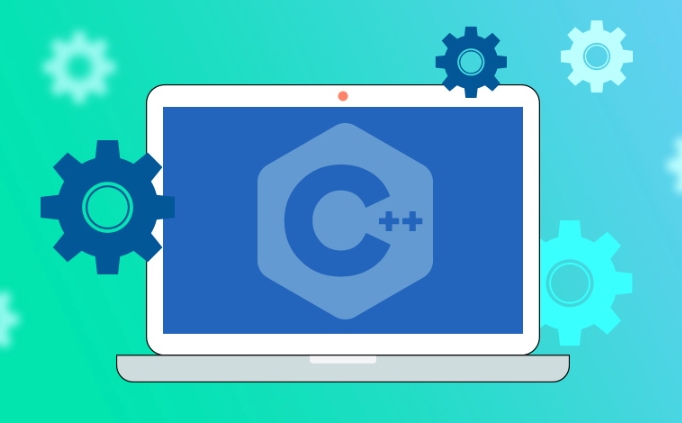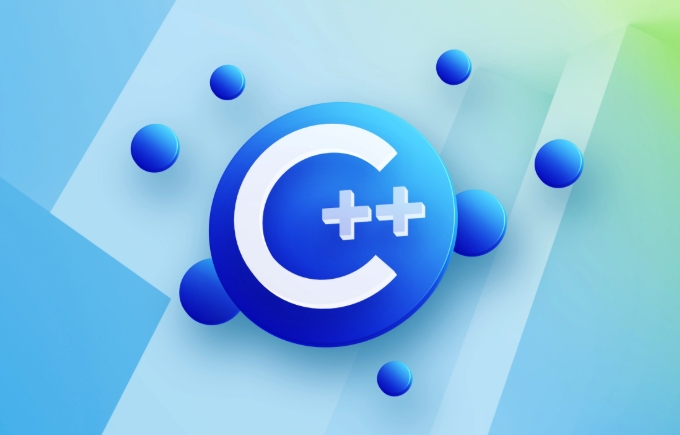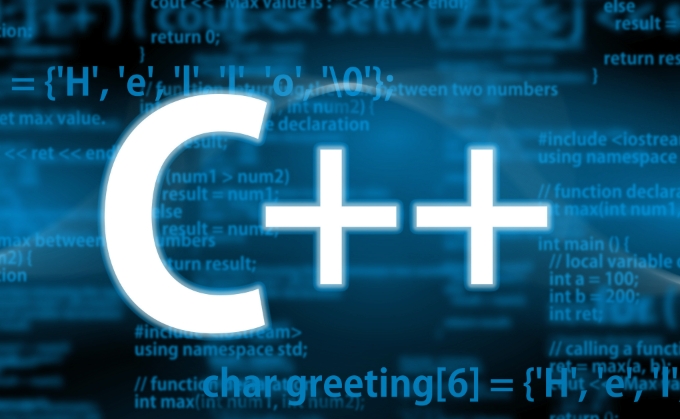It is recommended to use C for graphical interface development. The Qt framework is recommended because it has powerful functions and good cross-platform support; 1. When installing Qt, it is recommended to check the MinGW or MSVC compiler and corresponding version library files. Using Qt Creator can simplify the development process; 2. Create the first GUI program to be implemented through the Qt Widgets Application template and use the .ui file to visualize the design interface; 3. Use signals and slot mechanisms (such as connect functions or automatically generated slot functions) to achieve control interaction, such as button clicks to pop up the dialog box; 4. It is recommended to start with Qt Widgets and gradually master QML, document examples, official tutorials and open source project structure.

Directly focus: If you want to use C for graphical interface development, Qt is a very mature and widely used framework. It is not only powerful, but also has good cross-platform support, suitable for a variety of projects from beginners to professional developers.

1. Install Qt and configure the development environment
To get started with Qt, the first step is to install the Qt development kit. You can download Qt Online Installer on the official website and select the version that suits your system. It is recommended to check the "MinGW" or "MSVC" compiler (under Windows) during installation, as well as the corresponding Qt version, such as Qt 5.15.2 or Qt 6.x.

Once the installation is complete, you will get two main tools:
- Qt Creator : This is the officially recommended IDE, which has many built-in functions to assist in GUI development.
- Qt library files and header files : for you to call in the program.
If you are used to using other editors (such as VSCode), you can also configure the compiler and qmake separately, but for beginners, it is recommended to use Qt Creator first.

2. Create the first Qt GUI program
Open Qt Creator, create a new Application project, and select Application -> Qt Widgets Application . Then, along the way, keep the default in the class name section (a subclass of QMainWindow or QWidget will be generated).
After creation, you will see several files, the most important of which are:
-
.profile: Tell qmake how to build a project. -
main.cpp: Program entry. -
.h,.cpp, and.uifiles of the main window class.
.ui files are the core of the visual design interface. After double-clicking to open it, you can drag and drop controls such as buttons, input boxes, etc., and you can create a simple interface without writing a line of code.
3. Use signal and slot mechanism to achieve interaction
One of the biggest features of Qt is its "signal and slot" mechanism. This mechanism makes communication between interface controls simple and clear.
For example: You want to click a button and a dialog box pops up.
The operation steps are as follows:
- Add a QPushButton to the
.uieditor. - Right-click the button, select "Go to slot", and select the
clicked()signal. - Qt will automatically generate a slot function template.
- Write the operation you want in this function, such as:
QMessageBox::information(this, "prompt", "button was clicked!");
This is the most basic way to respond to events. Of course, you can also manually connect signals and slots, such as:
connect(button, &QPushButton::clicked, this, &MyClass::handleClick);
This approach has more advantages in more complex logic.
4. Recommended learning paths and resources
When you first learn, you don’t need to master all the modules. Start with the following aspects:
- Qt Widgets : used for desktop GUI development, suitable for getting started.
- QML (Advanced): If you want to use mobile terminals or more modern UIs in the future, you can learn QML.
- Documentation and Examples : Qt's own help document is very detailed, and there are a large number of examples that can be directly run to view the effects.
Recommended learning order:
- First read the official tutorial "Getting Started with Qt"
- Make a gadget like a calculator or notepad
- Try adding menu bar, file reading and writing, multi-threading and other functions
- Look at the code of some open source Qt projects to understand the actual engineering structure
There are also many good free courses online, which can be found on B and YouTube.
Basically that's it. Qt Although it looks a bit huge, it is not difficult to get started as long as you take it step by step. The key is to do more and learn while practicing to truly master it.
The above is the detailed content of C tutorial for GUI development with Qt. For more information, please follow other related articles on the PHP Chinese website!

Hot AI Tools

Undress AI Tool
Undress images for free

Undresser.AI Undress
AI-powered app for creating realistic nude photos

AI Clothes Remover
Online AI tool for removing clothes from photos.

Clothoff.io
AI clothes remover

Video Face Swap
Swap faces in any video effortlessly with our completely free AI face swap tool!

Hot Article

Hot Tools

Notepad++7.3.1
Easy-to-use and free code editor

SublimeText3 Chinese version
Chinese version, very easy to use

Zend Studio 13.0.1
Powerful PHP integrated development environment

Dreamweaver CS6
Visual web development tools

SublimeText3 Mac version
God-level code editing software (SublimeText3)
 Using std::chrono in C
Jul 15, 2025 am 01:30 AM
Using std::chrono in C
Jul 15, 2025 am 01:30 AM
std::chrono is used in C to process time, including obtaining the current time, measuring execution time, operation time point and duration, and formatting analysis time. 1. Use std::chrono::system_clock::now() to obtain the current time, which can be converted into a readable string, but the system clock may not be monotonous; 2. Use std::chrono::steady_clock to measure the execution time to ensure monotony, and convert it into milliseconds, seconds and other units through duration_cast; 3. Time point (time_point) and duration (duration) can be interoperable, but attention should be paid to unit compatibility and clock epoch (epoch)
 How to get a stack trace in C ?
Jul 07, 2025 am 01:41 AM
How to get a stack trace in C ?
Jul 07, 2025 am 01:41 AM
There are mainly the following methods to obtain stack traces in C: 1. Use backtrace and backtrace_symbols functions on Linux platform. By including obtaining the call stack and printing symbol information, the -rdynamic parameter needs to be added when compiling; 2. Use CaptureStackBackTrace function on Windows platform, and you need to link DbgHelp.lib and rely on PDB file to parse the function name; 3. Use third-party libraries such as GoogleBreakpad or Boost.Stacktrace to cross-platform and simplify stack capture operations; 4. In exception handling, combine the above methods to automatically output stack information in catch blocks
 What is a POD (Plain Old Data) type in C ?
Jul 12, 2025 am 02:15 AM
What is a POD (Plain Old Data) type in C ?
Jul 12, 2025 am 02:15 AM
In C, the POD (PlainOldData) type refers to a type with a simple structure and compatible with C language data processing. It needs to meet two conditions: it has ordinary copy semantics, which can be copied by memcpy; it has a standard layout and the memory structure is predictable. Specific requirements include: all non-static members are public, no user-defined constructors or destructors, no virtual functions or base classes, and all non-static members themselves are PODs. For example structPoint{intx;inty;} is POD. Its uses include binary I/O, C interoperability, performance optimization, etc. You can check whether the type is POD through std::is_pod, but it is recommended to use std::is_trivia after C 11.
 How to call Python from C ?
Jul 08, 2025 am 12:40 AM
How to call Python from C ?
Jul 08, 2025 am 12:40 AM
To call Python code in C, you must first initialize the interpreter, and then you can achieve interaction by executing strings, files, or calling specific functions. 1. Initialize the interpreter with Py_Initialize() and close it with Py_Finalize(); 2. Execute string code or PyRun_SimpleFile with PyRun_SimpleFile; 3. Import modules through PyImport_ImportModule, get the function through PyObject_GetAttrString, construct parameters of Py_BuildValue, call the function and process return
 What is function hiding in C ?
Jul 05, 2025 am 01:44 AM
What is function hiding in C ?
Jul 05, 2025 am 01:44 AM
FunctionhidinginC occurswhenaderivedclassdefinesafunctionwiththesamenameasabaseclassfunction,makingthebaseversioninaccessiblethroughthederivedclass.Thishappenswhenthebasefunctionisn’tvirtualorsignaturesdon’tmatchforoverriding,andnousingdeclarationis
 How to pass a function as a parameter in C ?
Jul 12, 2025 am 01:34 AM
How to pass a function as a parameter in C ?
Jul 12, 2025 am 01:34 AM
In C, there are three main ways to pass functions as parameters: using function pointers, std::function and Lambda expressions, and template generics. 1. Function pointers are the most basic method, suitable for simple scenarios or C interface compatible, but poor readability; 2. Std::function combined with Lambda expressions is a recommended method in modern C, supporting a variety of callable objects and being type-safe; 3. Template generic methods are the most flexible, suitable for library code or general logic, but may increase the compilation time and code volume. Lambdas that capture the context must be passed through std::function or template and cannot be converted directly into function pointers.
 What is a null pointer in C ?
Jul 09, 2025 am 02:38 AM
What is a null pointer in C ?
Jul 09, 2025 am 02:38 AM
AnullpointerinC isaspecialvalueindicatingthatapointerdoesnotpointtoanyvalidmemorylocation,anditisusedtosafelymanageandcheckpointersbeforedereferencing.1.BeforeC 11,0orNULLwasused,butnownullptrispreferredforclarityandtypesafety.2.Usingnullpointershe
 How does std::move work in C ?
Jul 07, 2025 am 01:27 AM
How does std::move work in C ?
Jul 07, 2025 am 01:27 AM
std::move does not actually move anything, it just converts the object to an rvalue reference, telling the compiler that the object can be used for a move operation. For example, when string assignment, if the class supports moving semantics, the target object can take over the source object resource without copying. Should be used in scenarios where resources need to be transferred and performance-sensitive, such as returning local objects, inserting containers, or exchanging ownership. However, it should not be abused, because it will degenerate into a copy without a moving structure, and the original object status is not specified after the movement. Appropriate use when passing or returning an object can avoid unnecessary copies, but if the function returns a local variable, RVO optimization may already occur, adding std::move may affect the optimization. Prone to errors include misuse on objects that still need to be used, unnecessary movements, and non-movable types






